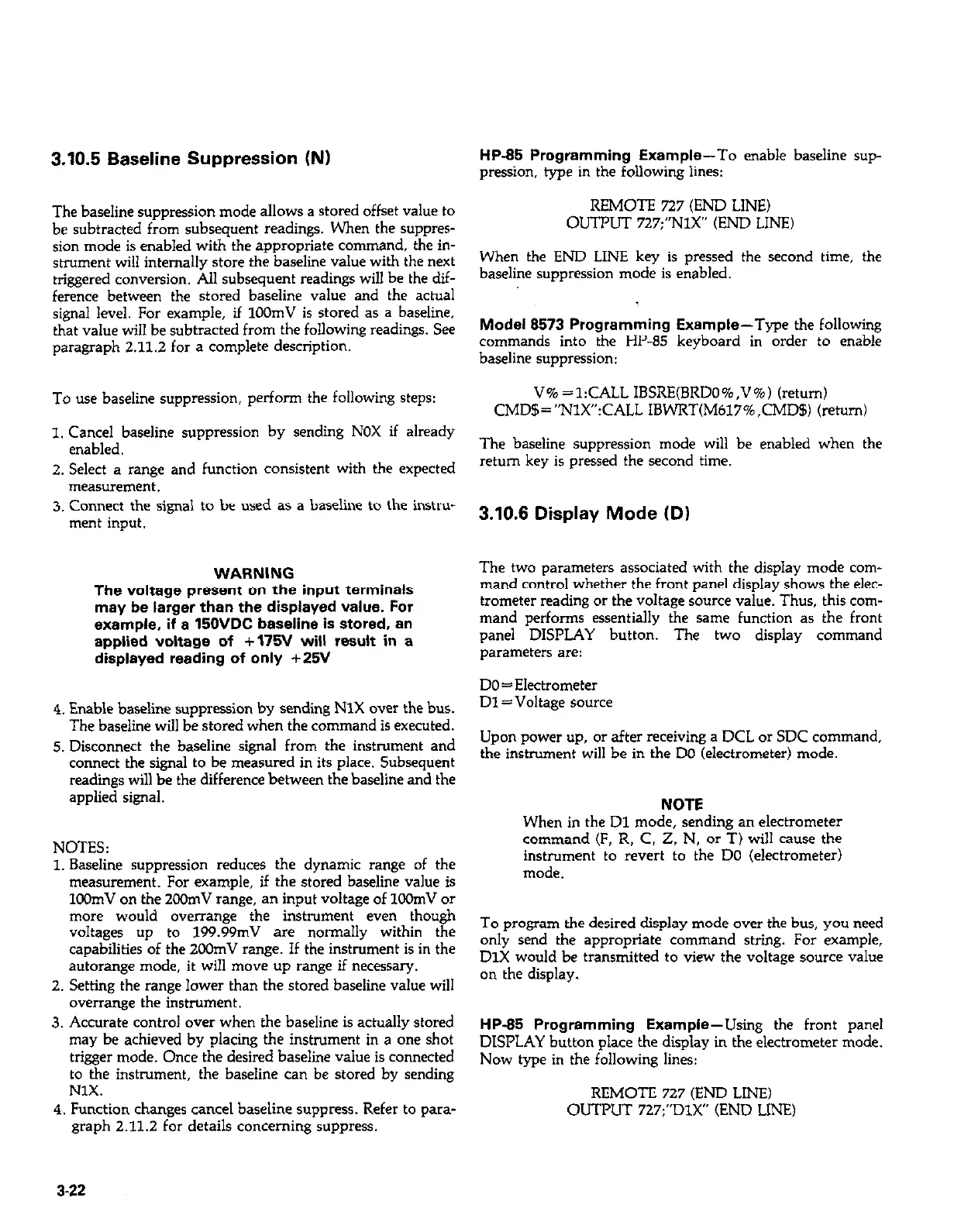

Do you have a question about the Keithley 617 and is the answer not in the manual?
| Brand | Keithley |
|---|---|
| Model | 617 |
| Category | Measuring Instruments |
| Language | English |
Details the warranty terms and conditions for the product and specific components.
Details the electrical and performance specifications for the Model 617 electrometer.
Advises on essential safety measures to avoid injury and instrument damage during operation.
Details unpacking, inspection, and initial steps to operate the Model 617.
Details the steps for connecting power and turning on the instrument.
Explains the self-test routine and potential display messages upon startup.
Provides an overview of the Model 617's front panel layout, controls, and indicators.
Introduces fundamental procedures for making voltage, resistance, charge, and current measurements.
Details how to connect input signals to the rear panel INPUT connector.
Explains the concept and application of guarding to minimize leakage and improve measurements.
Details the procedure for measuring low-level currents, including picoampere ranges.
Describes how to measure charge using the Model 617's coulombs ranges.
Explains how to measure resistance using constant current and voltage methods.
Explains how to use the Model 617's built-in voltage source for V/I measurements.
Explains how to extend capabilities using external feedback networks.
Covers instrument offset cancellation and baseline value storage.
Details how to store an offset value and subtract it from subsequent readings.
Explains how to trigger the instrument using external BNC connectors.
Describes the function and operation of each front panel control button.
Introduces the digital calibration program for front panel or IEEE-488 bus use.
Provides step-by-step instructions for measuring DC voltages with the Model 617.
Guides on connecting and adjusting the voltage source output.
Explains how to use Zero Correct and Zero Check to cancel internal offsets.
Describes the internal 100-point data store mode for logging readings.
Details continuous and one-shot triggering modes via the external trigger input.
Discusses factors affecting measurements at low signal levels.
Describes how to measure high resistances using the voltage source and electrometer.
Covers device commands, grouped into uniline, multiline, and device-dependent categories.
Details how to connect the Model 617 to the IEEE-488 bus using appropriate cables.
Explains how to check and set the instrument's primary address for bus communication.
Discusses software aspects for IEEE-488 controllers like HP-85 and IBM-PC.
Covers general bus commands like DCL, REN, IFC, LLO, GTL, SDC, GET, SPE, SPD.
Details commands controlling modes like function, range, trigger, and data format.
Describes commands to select measurement functions like Volts, Amps, Ohms, Coulombs.
Explains commands for controlling instrument sensitivity and selecting measurement ranges.
Details commands for canceling internal offsets and zeroing the instrument.
Explains commands to store an offset and subtract it from subsequent readings.
Details commands for programming the built-in voltage source output.
Describes commands specific to device configuration, controlling functions like mode and range.
Explains how to use the data store for logging readings and setting intervals.
Describes commands for setting calibration values for ranges and functions.
Details how to measure high insulation resistances using constant current and voltage methods.
Explains using the Model 617 as a high-impedance voltmeter with minimal circuit loading.
Guides on measuring low-level currents like nanoamperes and picoamperes.
Provides detailed procedures for verifying accuracy of volts, ohms, amps, and coulombs functions.
Provides step-by-step instructions for calibrating from the front panel.
Provides calibration steps for the amps function across various ranges.
Details the procedure for calibrating the coulombs function.
Provides calibration steps for the ohms function across various ranges.
Details the procedure for calibrating the instrument's internal voltage source.
Introduces digital calibration capabilities and recommendations.
Details procedures for calibrating the instrument via the IEEE-488 bus using a computer.
Describes steps to null any small offset in the input amplifier.
Outlines the calibration steps for the volts function across different ranges.
Offers guidance for diagnosing and resolving instrument problems.
Details procedures to null input current in the input stage for temperature compensation.